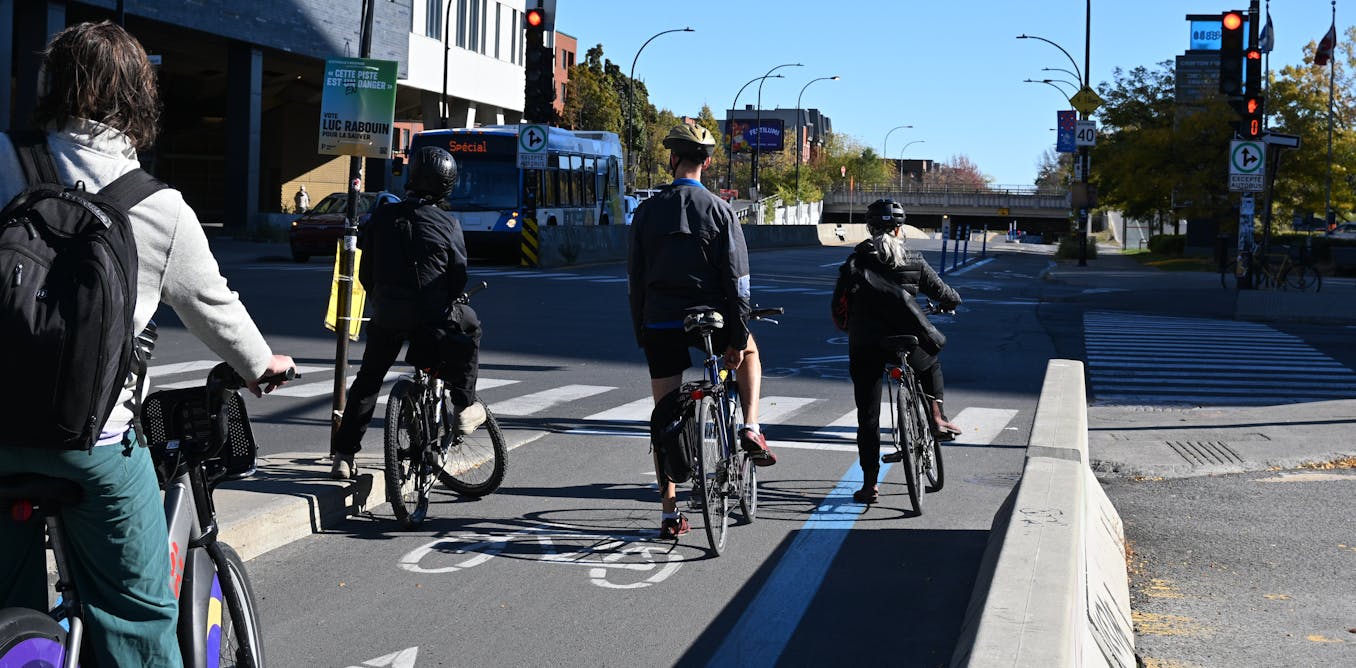The title is a bit clickbait-y. I went into this one feeling strongly opposed it. Afterwards I’m still not sure, but I get that there’s some nuance to it.
Relevance:
In Québec and other parts of Canada, discussions are underway to adopt such regulations.
Author: Steve Lorteau | Long-Term Appointment Law Professor, L’Université d’Ottawa/University of Ottawa
Excerpts:
Interactions between different users on roads are often a source of frustration, the most prominent being those between motorists and cyclists.
For example, many motorists are frustrated when they see bicycles cross an intersection without coming to a complete stop, which drivers are required to do.
As a professor of law at the University of Ottawa who specializes in urban law issues, I have studied various regulatory approaches that have been adopted around the world, each with different advantages and disadvantages.
The uniform application of traffic rules may seem fair, but in reality, it can create a false sense of equality.
On the one hand, the risks associated with different modes of transport are incommensurate. A car that runs a red light can cause serious or even fatal injuries. A cyclist, on the other hand, is unlikely to cause the same degree of damage.
Furthermore, the efficiency of cycling depends on maintaining speed. Having to stop completely over and over discourages people from cycling, despite its many benefits for health, the environment and traffic flow.
Treating two such different modes of transport the same way, therefore, amounts to implicitly favouring cars, something akin to imposing the same speed limit on pedestrians and trucks.
Since 1982, cyclists in Idaho have been able to treat a stop sign as a yield sign and a red light as a stop sign. Several American states (such as Arkansas, Colorado, and Oregon) and countries, such as France and Belgium, have adopted similar regulations.
In Québec and other parts of Canada, discussions are underway to adopt such regulations.
It’s important to note that the goal of the Idaho stop rule is not to legalize chaos on the roads. Cyclists must still yield to cars ahead of them at stop signs, as well as to pedestrians at all times, and may only enter the intersection when it is clear.



How is this faulty? The degree of damage is incredibly relevant. We don’t make everything that could ever cause damage illegal, because we have nothing left. Laws are a balancing act of pros and cons to society.
A car has far less visibility (they are inside a box with a few windows) will will do far more damage if they hit someone. A cyclist has dramatically better visibility (they have basically an unobstructed 180° view) and especially when going slow is very unlikely to cause significant damage (posing risk of significant harm only the the most frail and elderly).
If not requiring complete stops for cyclists leads to 1% more cyclists on the road (because their travel is easier) it almost certainly causes less harm overall due to how dangerous cars are and also their indirect health effects (both inactivity when driving and the pollution).
So no, the logic isn’t faulty at all and probably one of the most important arguments.
It’s a faulty argument because it only considers the damage caused by the bike hitting something, not the consequences of other vehicles with the right of way making emergency maneuvers to avoid smearing the idiot who ran the stop. This guy has been sitting on his tenured ass and smelling his own farts for too long.
It would still be illegal for a cyclist to roll through a 4 way stop if it wasn’t their turn. My understanding is that they can only treat it as a yield if they have the right of way. Which makes sense.
Ideally cyclists would have their own dedicated infrastructure but until then we need to share the road.